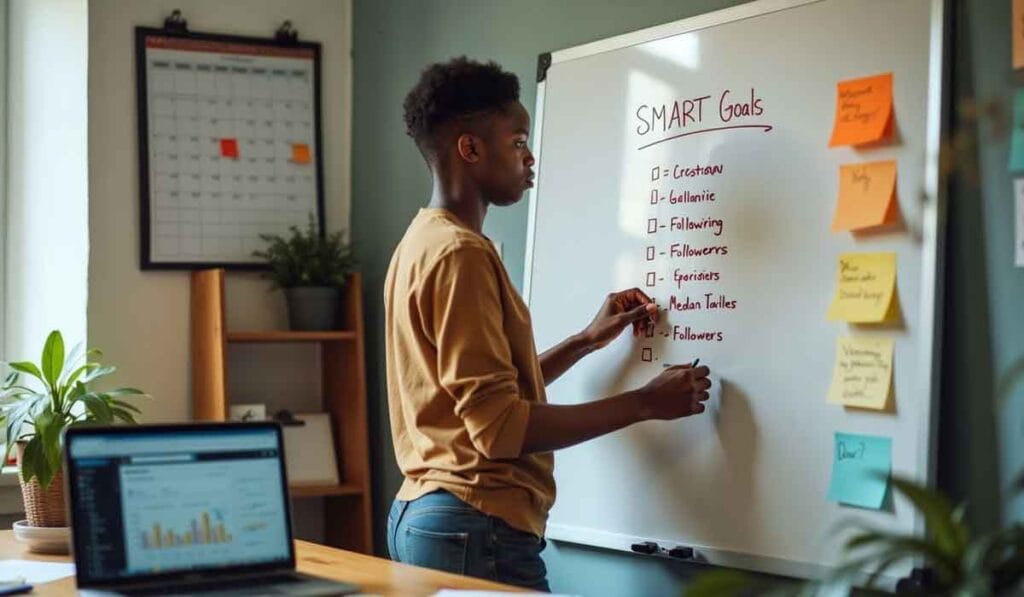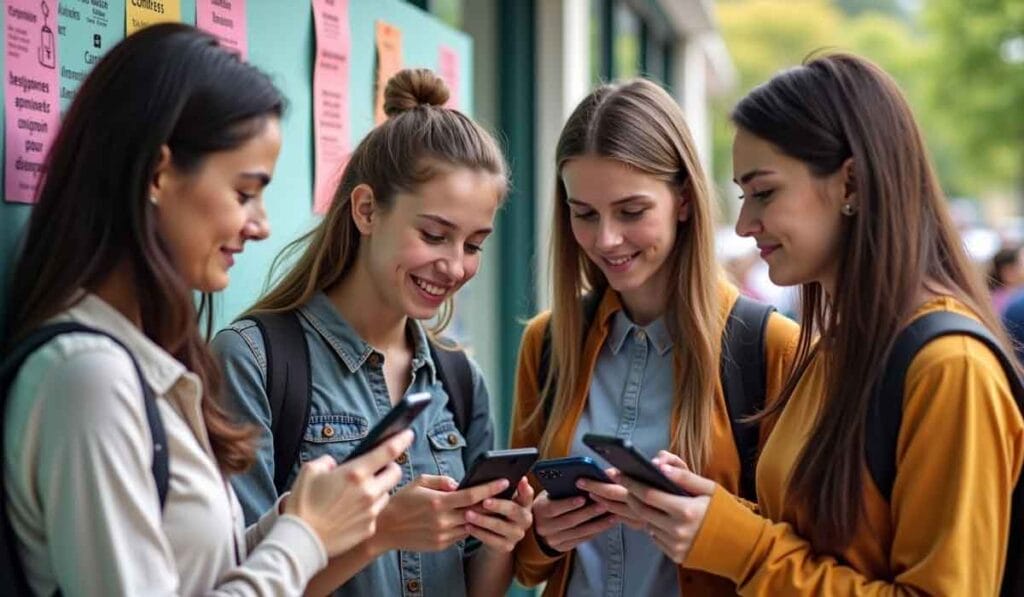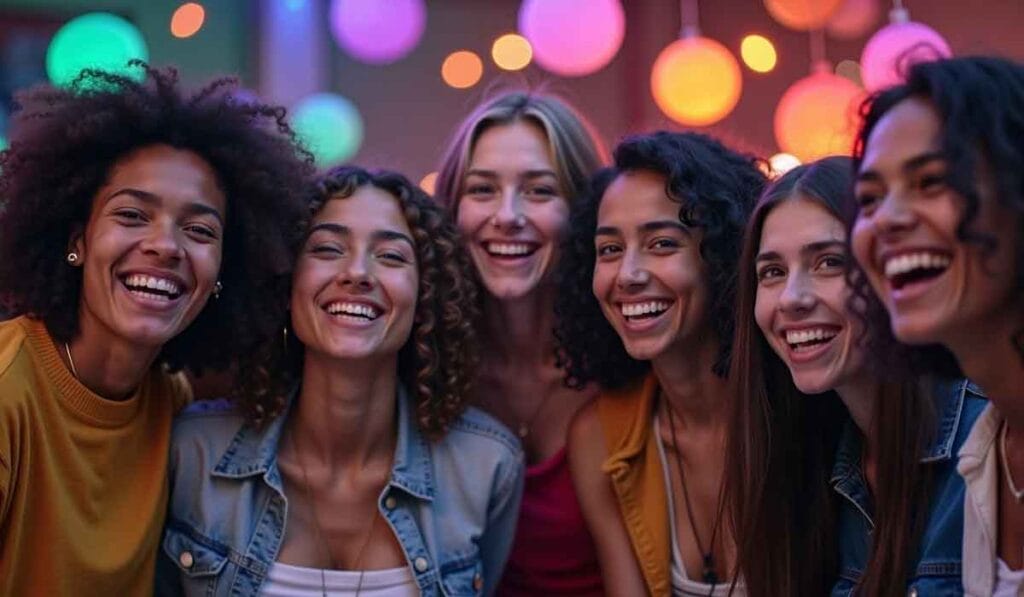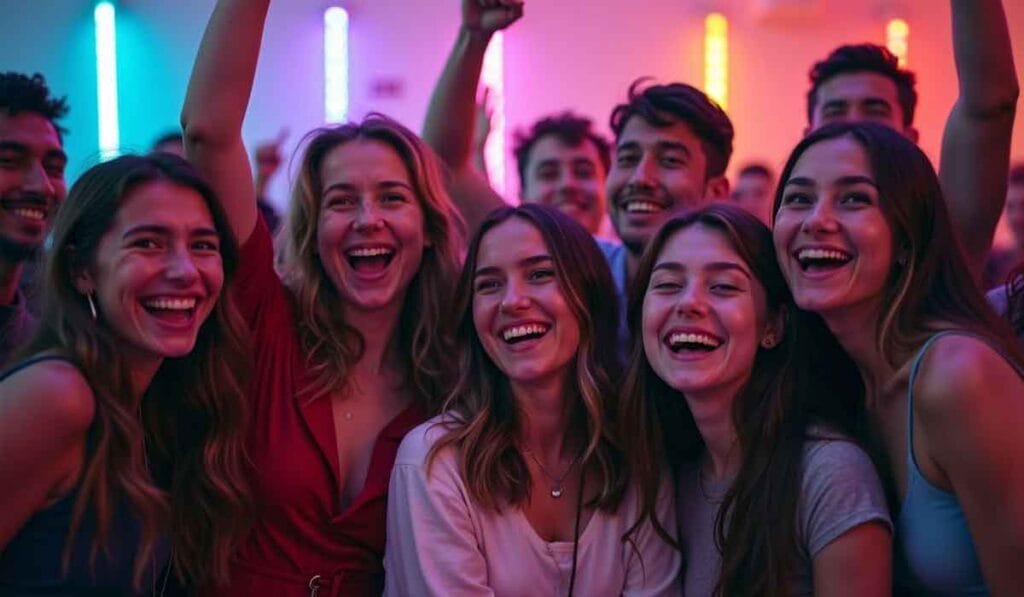Make Your Event Go Viral: Social Media Marketing Guide 2025
Struggling to make your event go viral on social media?
Many find it tough to crack the code of online engagement. But did you know that nearly 89% of marketers use social platforms to boost their events?
This guide will walk you through creating an effective marketing plan, step by step.
Note: We offer an event room for all types of events & parties.
You can bring your own food or we can provide food. We will work within your budget.
Key Takeaways
- Set Clear Goals and Track Progress:
Set specific, measurable goals like increasing sign-ups by 20%. Use KPIs such as follower growth and engagement rates to track success. - Know Your Audience and Platforms:
Research your audience’s age, interests, and habits. Choose the right social media channels based on this information for better engagement. - Create Shareable Content:
Develop fun and eye-catching content like memes, images, and short videos. Use creative hashtags to spark conversations about your event. - Leverage Influencers for Wider Reach:
Collaborate with influencers who match your brand. Offer clear incentives and set expectations for posts to maximize visibility. - Use Paid Ads Wisely:
Target the right audience through custom audiences or lookalike groups. Monitor ad performance closely and adjust spending based on real-time data.
Defining Your Social Media Marketing Goals
Set clear goals for your social media campaign. Decide what success looks like, so you can measure it later.
Set specific, measurable objectives

Set clear goals for your social media campaigns. Make each goal specific and measurable. For instance, aim to increase event sign-ups by 20%. Use numbers to track progress.
Define key performance indicators (KPIs). Choose metrics like follower growth or engagement rates. Focus on concrete results, not just activity. This helps you know if your strategy works or needs a tweak.
Identify key performance indicators (KPIs)

Track key performance indicators (KPIs) to measure your success. KPIs help you see if you’re meeting goals. Common KPIs include engagement rates, follower growth, and click-through rates.
Use social media analytics tools to monitor these metrics. Tools like Google Analytics can track website traffic from social networks. Check your dashboard daily or weekly to stay on top of any trends or patterns.
Adjust your tactics based on what the data shows you for better results next time.
Target Audience Analysis
Knowing your audience helps you create the right content. Explore their likes, habits, and needs to connect better.
Research demographic and psychographic information

To craft a successful social media strategy, you need to know your audience. Start by researching their demographics like age, gender, and location. Tools like Google Analytics can help here.
Next, dig into psychographic info. Find out what hobbies or interests they have. This shapes how you create content and select social media platforms.
Understanding your audience is the first step in creating engaging content. – Anon
Select appropriate social media platforms based on this information to reach them effectively!
Select appropriate social media platforms based on audience preferences

Research your audience well. Find out their age, interests, and habits. This helps you pick the right social media channels for them.
If your target is Gen Z, use TikTok and Instagram Reels. For professionals, LinkedIn groups work best. Are you trying to reach moms? Pinterest is a good choice. Knowing where they spend time online increases customer engagement and viewership.
Crafting Your Content Strategy
Make your content fun and easy to share. Use eye-catching visuals and clever hashtags to draw in the crowd.
Develop engaging and shareable content

Create content that grabs attention. Think funny memes, eye-catching images, and short videos. Use bold colors and keep messages simple. Your content should make people want to share it.
Utilize hashtags to spark conversation. Use teaser posts before your event with fun hints or surprises.
This builds excitement and keeps your audience guessing what’s next. Next up is working with social media personalities to boost your event’s reach!
Utilize teaser content and creative hashtags

Now that you have engaging content, start building excitement. Share teaser posts with hints about your event. Create short videos or images that spark curiosity without giving away too much.
Use creative hashtags to get people talking. Make them catchy and relevant to your event.
For example, if the event is a launch party for new products, use #LaunchParty2023 or #SneakPeek2023 on platforms like Instagram and Twitter (X).
This helps boost brand awareness and gets more eyes on your posts.
Leveraging Influencer Partnerships
To make your event go viral, you need influencers. They can spread the word faster and wider than anyone else.
Identify and collaborate with relevant influencers

Influencers play a huge role in marketing. They can help spread the word and attract more people to your event.
- Research Influencers in Your Niche
- Look for influencers who match your brand identity.
- Check their follower count and engagement rates.
- Analyze the type of content they produce and see if it aligns with your event’s theme.
- Evaluate Their Audience
- Make sure their followers fit your target audiences.
- Study demographics like age, location, and interests.
- Assess if their community is active and engaged.
- Reach Out Professionally
- Send a direct message or email with a clear subject line.
- Introduce yourself and explain why you think they’d be perfect for this collaboration.
- Be concise but detailed about what you expect from them.
- Offer Clear Incentives
- Propose valuable perks like payment or free event passes.
- Highlight benefits that align with their interests or growth goals.
- Ensure mutual benefit to build a stronger partnership.
- Define Roles Clearly
- Outline what kind of content you expect: posts, stories, live-streams, etc.
- Set deadlines for when these should be posted.
- Clarify any hashtags or brand messages they need to include.
- Use Contract Agreements
- Draft a simple contract detailing terms and expectations.
- Include payment details, posting schedules, and deliverables.
- Ensure both parties sign to avoid misunderstandings.
- Maintain Communication
- Keep in touch through the campaign duration.
- Address any questions they might have promptly.
- Provide feedback on their posts to ensure alignment with your campaign vision.
- Measure Performance
– Track metrics like engagement rates on influencer posts.
– Compare these against your KPIs to gauge success.
– Adjust future strategies based on these insights for better results next time around.
Amplify event reach through influencer networks
Influencers can boost your event’s visibility. Share their posts and stories to reach more people. Influencers have followers who trust them, which can build excitement for your event.
Encourage influencers to use creative hashtags and share teaser content with their audience. They can also do live streaming or post engaging updates during the event. This helps capture attention from different social media platforms like Instagram and Facebook Live.
Utilizing Paid Social Media Advertising

Paid ads can target your audience directly. This boosts visibility and drives more traffic to your event.
Explore options for targeted ads
Targeted ads are a powerful tool in social media strategies. They help you reach the right people and get the most out of your budget.
- Define Your Audience
Know who you want to reach. Use market research to understand their age, interests, and habits. - Choose the Right Platform
Each social media site works differently. Instagram is great for image-sharing, while Facebook offers detailed targeting options. - Set Your Budget
Decide how much money you can spend on your ad campaign. Allocate enough to see results without breaking the bank. - Use Custom Audiences
Target specific groups using custom audiences, like past visitors to your website or email subscribers. - Leverage Lookalike Audiences
Create lookalike audiences similar to your current customers. This maximizes your reach with potential new leads. - Test Different Ad Formats
Try video ads, carousel ads, and stories. This helps you see which format engages your audience best. - Monitor Performance
Keep an eye on key performance indicators (KPIs) such as clicks and sales conversions to see how well your ads are doing. - Adjust Mid-Campaign if Needed
Make tweaks based on real-time data. If an ad isn’t working, change it up quickly. - Use Geo-Targeting for Events
Focus on people in specific locations close to your event venue for better turnout rates. - Implement Retargeting Techniques
Retargeting options on social media apps, such as Facebook’s retargeting feature, allow advertisers to show ads to users who have interacted with previous campaigns or visited related web pages. - Utilize Cost per Action (CPA)
Instead of paying per click or impression, opt into CPA bidding models where payment occurs only when someone takes the desired action like signing up or purchasing tickets. - Evaluate Remarketing Strategies
Utilize qualitative assessments post-campaign; analyze behavior patterns through market research tools ensuring optimal engagement with future projected events via remarketing synergy integrated platforms…
Allocate budget for maximum impact
Spending money smartly is key to success. Choose your budget by considering what gives you the best return on investment (ROI).
Focus on where your audience is most active. Use tools like targeted ads on X (Twitter) and Facebook’s ad manager.
Start with smaller amounts for testing. See which platforms work best for you. Adjust based on performance.
Track metrics like reach, engagement, and lead generation closely. Make sure every dollar spent helps boost your event’s visibility and impact.
Pre-Event Engagement Tactics

Hype up the event with captivating announcements on your Facebook page. Organize exciting contests and giveaways to keep everyone buzzing.
Use announcements and reminders effectively
Use clear announcements to keep the buzz alive. Share updates on your Facebook page and Twitter about the event’s details. Create eye-catching graphics for these posts.
Send reminders as the event date approaches. Use Instagram Stories and threads to share countdowns or sneak peeks. Everyone loves a good reminder of something they’re looking forward to.
Organize contests and giveaways to increase anticipation
Organize contests and giveaways to boost excitement. Run simple games that involve your event branding or key themes.
For example, a photo contest related to the event can drive engagement on Instagram accounts.
Offer prizes like free tickets or exclusive merchandise.
Promote these contests across all social media platforms to increase reach. Use creative hashtags for higher visibility.
You can also collaborate with influencers for more entries and shares.
Your audience will feel involved, making them eager for the big day!
Live Engagement During the Event

Go live to share real-time updates with your audience. Keep them engaged with fun, interactive content throughout the event.
Implement live streaming and real-time updates
Implement live streaming to create a buzz and engage more people. Share your brand’s story in real-time.
Use platforms like Facebook, Instagram, or YouTube for live streams. Show behind-the-scenes action or highlight key moments of the event.
Real-time updates keep your audience hooked. Post tweets about exciting happenings as they occur.
Use lively photos and videos to capture their attention. This keeps everyone who couldn’t attend feeling connected and excited about what’s happening.
Engage attendees with interactive content
Use polls and quizzes to engage your audience. People love sharing their opinions. These tools can make your event more dynamic.
Incorporate live-streaming on social media. Share real-time updates, behind-the-scenes moments, or short interviews with key speakers. This keeps everyone involved and excited throughout the event.
Post-Event Strategies

Share event highlights to keep the excitement alive. Use testimonials to build trust and attract future attendees.
Share highlights and testimonials
Post cool highlights and testimonials from the event. Use photos, short videos, and quotes from happy attendees. This shows the fun and success of your event.
Make posts shareable so followers can spread them. This builds trust in your marketing strategy and keeps people excited about future events.
Repurpose content to maintain engagement
Cut long videos into short clips for social media. Share these clips on platforms like TikTok and Instagram to keep your audience engaged.
Use quotes from user-generated content (UGC). Turn them into eye-catching graphics or tweets. This highlights fans and keeps the buzz going after your event ends.
Analyzing and Refining the Strategy
Check your results against your goals using key performance indicators (KPIs). Fix what did not work, and plan better for next time.
Evaluate performance against initial KPIs
Check your KPIs soon after the event to see how you did. Look at metrics like attendance, social media engagement, and new followers. Compare these numbers to your initial goals.
Analyze which content got the most engagement. Did people love teaser posts or live updates more? Use this data to improve future events. Adjust your strategy based on what worked and what didn’t.
This helps keep interest high in future campaigns and boosts market share for your brand.
Adjust tactics for future events based on insights
Analyze data from your social media channels post-event. Identify what worked well and what didn’t. Look at engagement rates, influencer impact, and ad performance.
For example, if live streaming drew many viewers but teasers did not perform well, focus more on real-time updates next time. Use feedback from attendees to improve future event planning too.
Next: Conclusion
Conclusion

Creating a viral event on social media can be the game-changer for your brand. With clear goals, engaging content, and influencer partnerships, you can make waves.
Don’t forget to keep the buzz alive before, during, and after your event.
Measure what worked and tweak for next time. Happy marketing!
FAQs
1. What is influencer marketing, and how can it help create a viral event?
Influencer marketing involves working with popular social media personalities to promote your event. Their large following can boost brand visibility, spark community building, and drive engagement.
2. How do I manage content creation for an event on social media?
Content creation includes making promotional material like videos or posts that reflect your brand voice. It also means live tweeting during the event and creating engaging Tiktoks to capture attention.
3. What’s the role of augmented reality in a viral event marketing plan?
Augmented reality (AR) enhances user experience by adding digital elements to real-world settings. This can make your promotional material more interactive and memorable, catching the eye of millennials who love innovative tech.
4. Why is employee advocacy important in my social media strategy?
Employee advocacy encourages staff to share content about the event on their personal accounts. This boosts trustworthiness as people are more likely to believe recommendations from individuals they know.
5. How does gamification contribute to making an event go viral?
Gamified elements like contests or challenges engage attendees and encourage sharing on social platforms, helping spread the word quickly through referral marketing techniques.
6. Can CRM tools improve my social media management for events?
Yes! Customer relationship management (CRM) tools track customer journeys from initial interest through post-event follow-up, ensuring you maintain strong connections while optimizing quantitative data for future campaigns.



